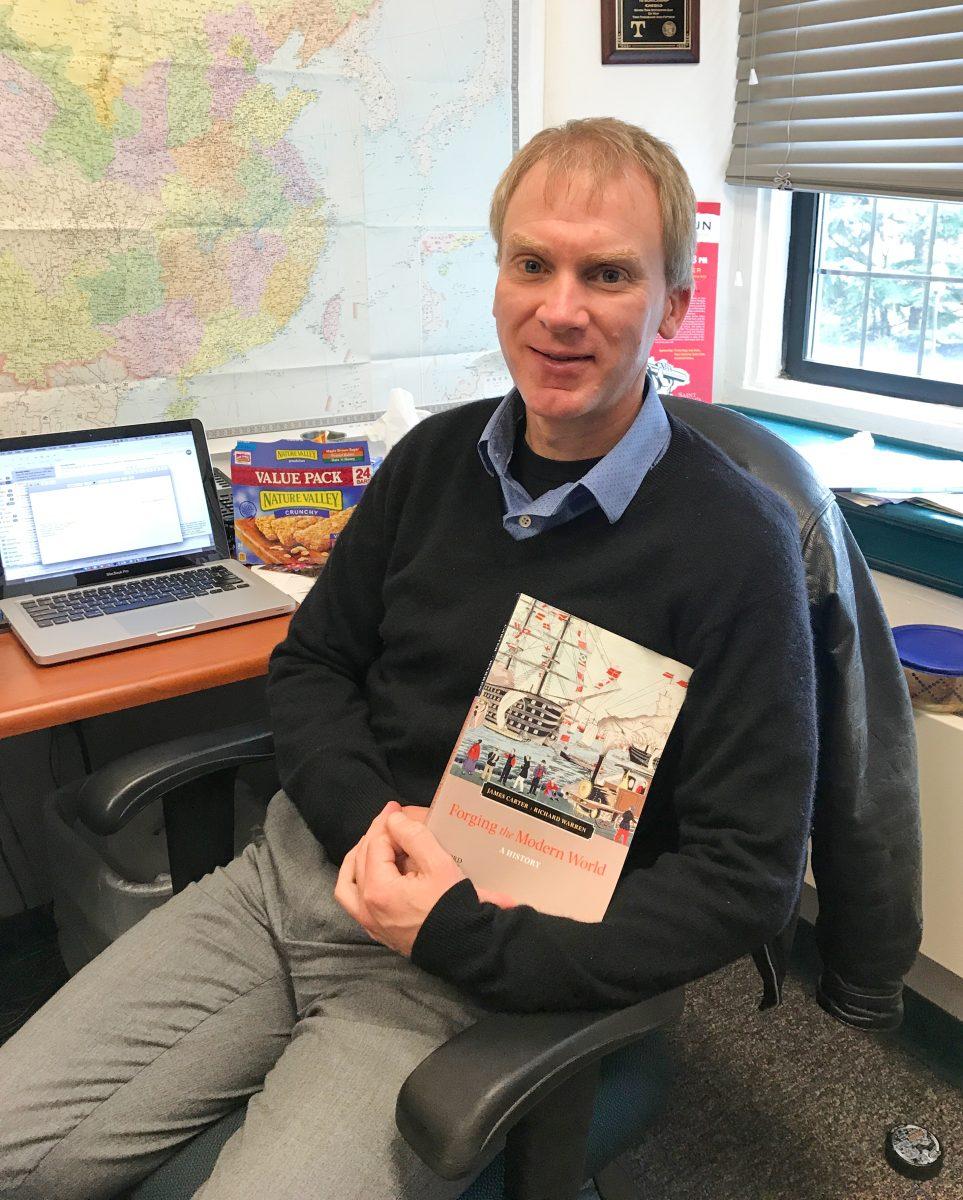Why some professors write their own textbooks.
When Kristopher Tapp, Ph.D., professor of mathematics, begins to think about which textbook to use in his classes, he chooses a book with a reliable author: himself.
Tapp has written three textbooks overall, but the textbook he uses the most at St. Joe’s is “Symmetry: A Mathematical Exploration.” The book goes hand-in-hand with Tapp’s math course of the same name, which he designed for the new GEP (General Education Program) the university adopted in 2013.
The new GEP allowed St. Joe’s faculty to develop courses unique to the university’s curriculum. Because these courses were only taught at St. Joe’s, some professors decided to create their own textbooks for them as well.
“I wanted to develop a math beauty class I really believed in,” Tapp said. “For this topic, there just wasn’t a book. So, writing a book was the only choice if I wanted to teach this topic at this level.”
David Hecker, Ph.D., professor of mathematics, is also working on his own textbook for a math beauty course. The book, “Linear Methods,” is slated for publication in the fall of 2018. Hecker is already co-author of another math textbook, “Linear Algebra,” which is in its fifth edition.
“I put together chapters from lots of books that covered the topics I wanted as a course pack,” Hecker said. “I found out it didn’t work very well because they weren’t at the right level.”
Hecker began writing chapters that he felt were important and, within a year, he had written 80 percent of the “Linear Methods” book.
Math is not the only area of the GEP which has encouraged faculty to write their own texts.
Two history professors, James Carter, Ph.D., and Richard Warren, Ph.D., wrote “Forging the Modern World,” a book that is used in all History 154 courses of the same name.
“The goal we had all along was that we wanted something not too big, not too expensive, and that would be flexible,” Carter said. “It wouldn’t have every factor and every detail, but the idea is that it would enable instructors to take their own expertise.”
Carter and Warren are currently working on the second edition of “Forging the Modern World.” The first edition is used at other universities besides St. Joe’s.
Emma Herrmann ’20 used Carter and Warren’s “Forging the Modern World” in her history class. She said she did not mind that her professors earn royalties from the book’s sales.
“They’re from the school, so why not have the profits go to them?” she said.
Michael Solomon, Ph.D., professor of marketing, has written six textbooks. His first, “Consumer Behavior,” is in its 12th edition.
“The courses that I was teaching, the books didn’t reflect what I found important for the students to know,” Solomon said.
Melissa Goldthwaite,Ph.D., professor of English, has collaborated with other professors on multiple textbooks, her most recent one being “The Little Norton Reader: 50 Essays from the First 50 Years,” a shorter version of “The Norton Reader,” which she also edited.
Goldthwaite said she believes students can benefit from textbooks their professors write because they follow what the professors find important. Plus, reading from a textbook with a professor’s exact words allows the course to be more cohesive.
“In the case of ‘The Little Norton Reader’ and ‘The Norton Pocket Book of Writing by Students,’ I wrote all of the questions after each reading,” Goldthwaite said. “In doing so, I was able to direct students’ attention to elements of the texts I find important.”















































